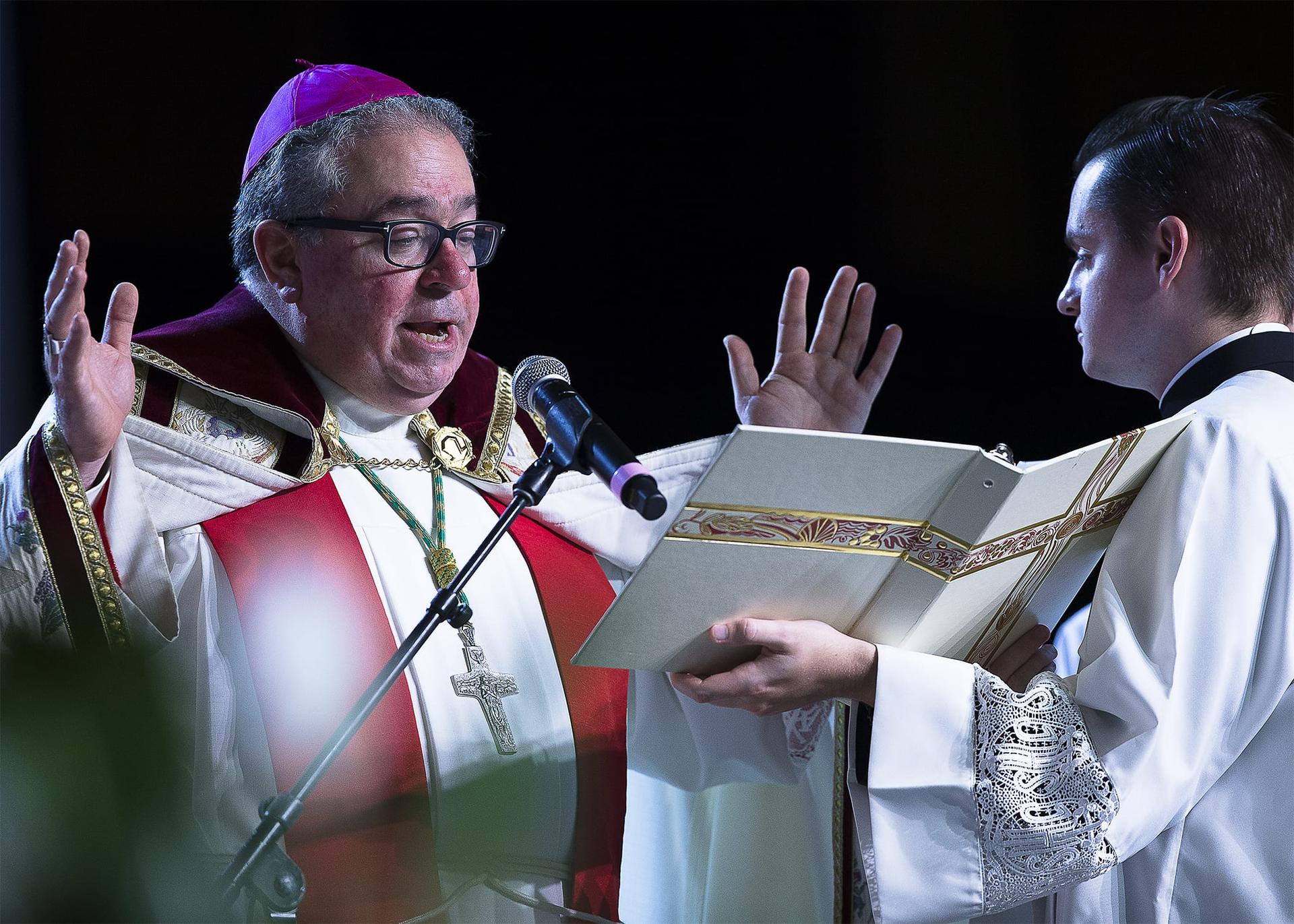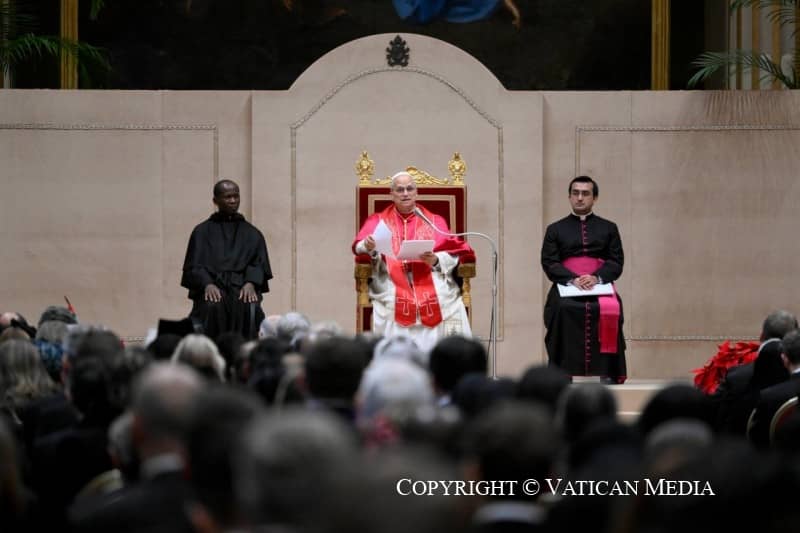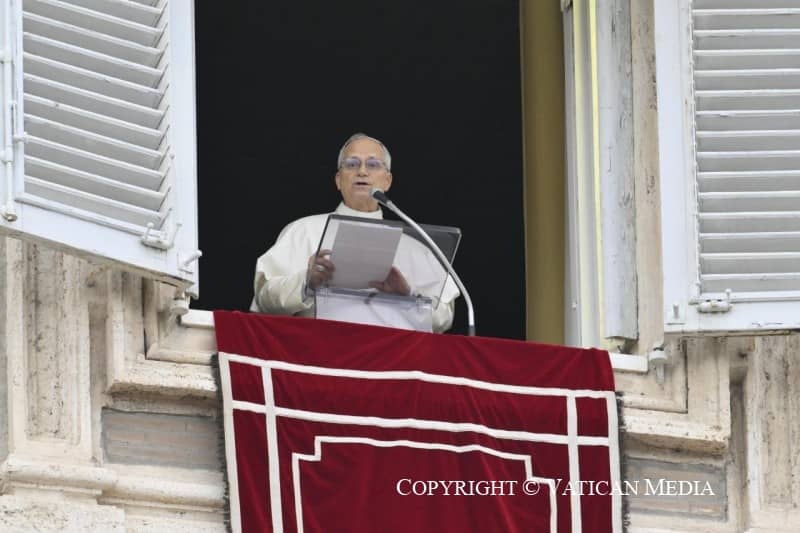The case of the Carmelite nuns in Fort Worth, Texas, has been a head-scratching one since the moment it made the papers about a week ago. It had all the elements of a sensational story – and a salacious one, to boot – even before the Vatican intervention, but very little is known for certain.
The barest bones of the story are that the Bishop of Fort Worth, Michael Olson, opened an investigation in April into at least one unspecified allegation of sexual misconduct against the superior of the Carmelite monastic community in Arlington, Tx., Mother Teresa Agnes (Gerlach) of Jesus Crucified, and last week summarily dismissed her not only from the leadership of the monastery but from the Carmelite Order.
The Diocese of Fort Worth has claimed Gerlach admitted to some sexual misconduct, but the sisters say their erstwhile superior was questioned while in a post-operative stupor.
In fact, Gerlach is reported to be very ill and in need of constant care, which raises more than one question regarding her capacity to govern her community, but also makes one wonder why Olson has approached the case with such heavy-handedness.
Olson searched the monastery last month – reportedly on mere minutes’ notice – and seized electronics as part of his investigation. Olson also put the monastery effectively under interdict, and accused the sisters of stirring up animus against him in the press and attempting to obstruct his investigation.
The sisters say Olson refused to admit three different canon lawyers they had chosen to represent Gerlach and instead appointed canonical counsel of his own choosing to represent her and the sisters’ interests. Meanwhile, the sisters have sued Olson and the Fort Worth diocese in civil court, claiming he’s after their list of benefactors.
Gerlach, by the way, is accused of sexual misconduct with a priest whom Olson has not named publicly, even though Olson has made known the nature of the accusation(s) against her.
Gerlach has appealed her dismissal, but her efforts are unlikely to cut ice in Rome. The Dicastery for Consecrated Life has taken the extraordinary step of appointing Olson “pontifical commissary” over the Carmelite monastery and also rubber-stamped Olson’s every decision so far.
There’s obviously a lot more we don’t know about this case than we do, but the optics may fairly be said to resemble – for you Star Wars fans out there – Sheev Palpatine’s cackling alter-ego, Darth Sidious, who was once on the verge of doing something of dubious validity.
“Is that legal?” he’s asked.
“I will make it legal,” Sidious replies.
This isn’t the first time of late the Vatican has appeared to move with remarkable zeal, and little by way of due process, against a community of nuns. Earlier this year, there was a kerfuffle in Italy over the expulsion of two Poor Clare sisters who refused to abandon their 13th century convent on the Amalfi Coast, and another over a Benedictine community that didn’t take well to the Vatican’s removal of their superior.
All this is ironic for a pope who’s seen as a champion of women’s empowerment, not to mention a friend of women’s religious communities. Indeed, these recent episodes probably would already have become a much bigger media firestorm were it not for the temporary protection provided by Francis’s narrative.
That insulation, however, won’t hold out forever. Pope Francis also hasn’t helped the situation with his handling of other close-to-home cases, either.
Think of l’Affaire Zanchetta, in which Francis first gave Bishop Gustavo Zanchetta, a friendly bishop from Francis’s native Argentina, the benefit of the doubt when Zanchetta was accused of sexual and financial misconduct. Then, Francis let the bishop quietly retire and carved him a sinecure in the Vatican’s sovereign asset management office.
More recently, there’s the scandal involving Father Marko Rupnik SJ, the disgraced celebrity artist-priest who serially abused young women for decades, right under the noses of his Jesuit superiors, senior Vatican officials and three popes, including Francis.
Zanchetta is serving a sentence in Argentina after a criminal court found him guilty of abusing seminarians. Rupnik is facing an investigation being run by the Jesuits, which was opened under intense media pressure and only after the Jesuit head of the Dicastery for the Doctrine of the Faith, Spanish Cardinal Luis Ladaria, had closed the case against Rupnik.
Rupnik trotted the globe and received accolades even when he was supposed to be under restrictions. Even after the Jesuits announced a new investigation into the allegations against Rupnik and promised he would be barred from public ministry and closely monitored, Rupnik was spotted concelebrating Mass in Rome with other Jesuits, including his immediate superior.
Ha santi in paradiso, the Romans say, meaning roughly, “He has friends in high places.”
Last week, Francis poured more than a little salt on the wound when he praised an iconic depiction Rupnik had made of the Madonna and Child in a video message for participants in a Marian congress in Aparecida. Rupnik’s artwork continues to feature prominently on various Vatican Media pages, as well.
Optics aside, and for whatever reason, the Vatican and Pope Francis have moved with alacrity against religious sisters and their communities when it appeared to suit, while they have sometimes treated friendly priests and prelates with kid gloves.
There is little in the way of a standard apparent, and that makes it difficult to perceive that justice is being served.
“Justice,” the maxim runs, “must not just be done, but be seen to be done.”
With that in mind, perhaps Francis (and whoever comes afterwards) should consider the quip James Carville made famous when he was senior strategist for the campaign that brought Bill Clinton to the White House in 1992: “It’s the economy, stupid.”
Swap in “transparency” for “economy” and you have the perfect Vatican version.














